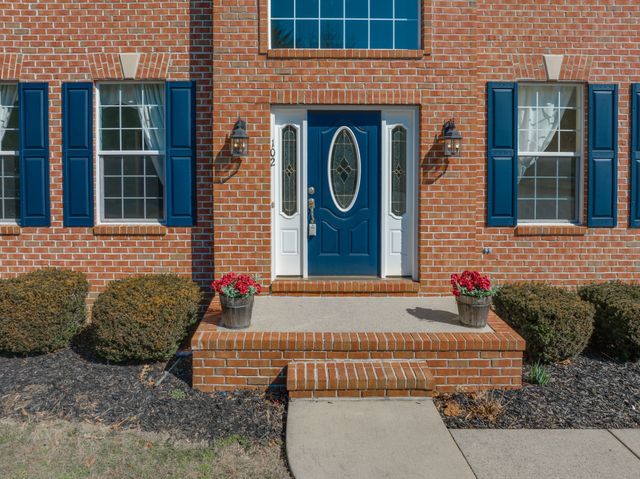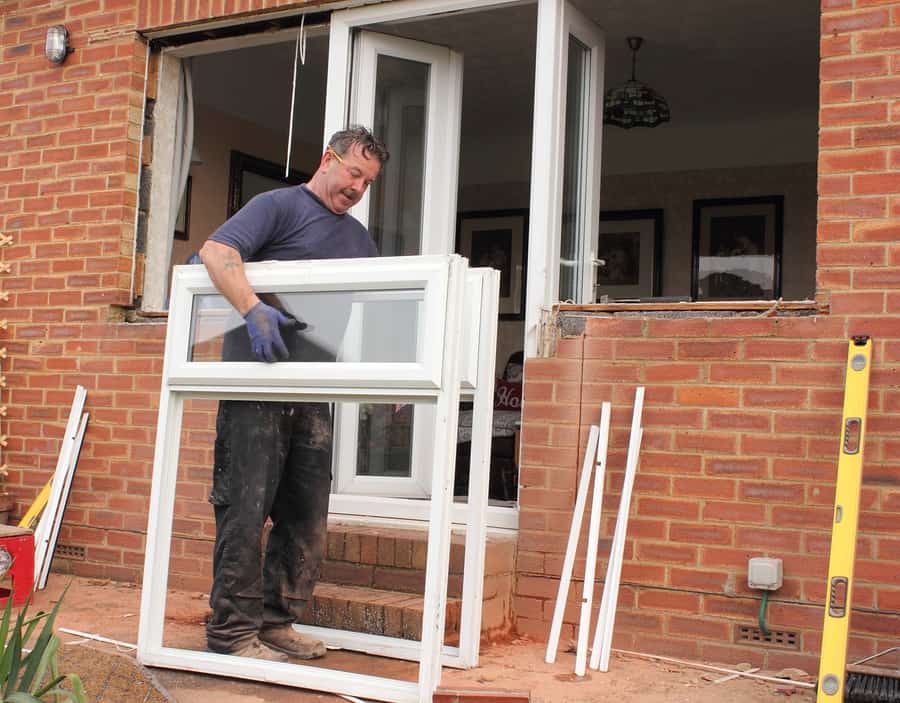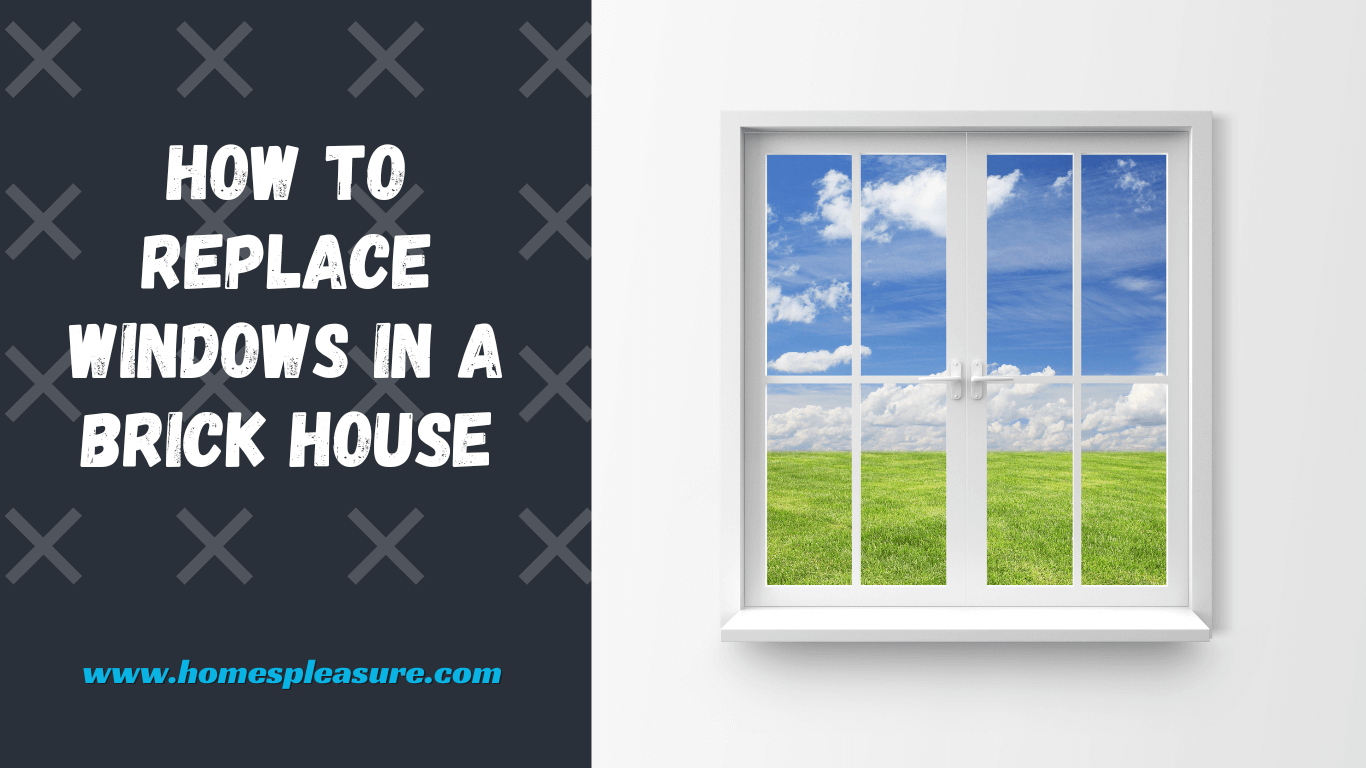How to replace windows in a brick house: accurately measure the existing window openings and select new ones that fit properly. Replacing windows in a brick house involves careful planning and accurate measurements to ensure a proper fit for the new windows.
The process may require removing the existing window frames and installing the new ones securely into the brick façade. Proper Sequestration and sealing are pivotal to help air leaks and ensure energy effectiveness. Hiring professionals can guarantee a seamless and successful window replacement project for your brick house.
Additionally, selecting windows with high energy efficiency ratings can help improve your home’s comfort and energy efficiency.

Credit: www.hankebrothers.com
Assessing Your Windows: How to Replace Windows in a Brick House
Before beginning the process of replacing windows in a brick house, it is essential to determine the condition of your current windows and measure their size accurately. This step will help you ensure a smooth and successful window replacement project.
Evaluating Window Condition
Inspect your windows for signs of damage, such as cracks, rot, or moisture. Ensure that the window frames are in good condition and that there are no visible leaks or drafts. Assess the functionality of the windows by checking if they open and close properly.
Measuring Window Size
Use a tape measure to measure the width and height of each window opening accurately. Take measurements at the widest point for width and the highest point for height. It is crucial to ensure precise measurements to order the correct size replacement windows.
Choosing The Right Windows
Choosing the right ones is crucial when replacing windows in a brick house. Not only do you want aesthetically pleasing and functional windows, but you also want them to match your home’s overall style and design. In this article, we will explore the important considerations when selecting window styles and the importance of energy efficiency.
Selecting Window Styles
When selecting window styles for your brick house, it’s essential to consider both the architectural style of your home and your personal preferences. Here are some popular window styles to choose from:
- Double-hung windows have two sashes that slide up and down, allowing excellent ventilation control.
- Casement windows: Hinged on one side, casement windows swing outward, providing unobstructed views and ample airflow.
- Picture windows: If you want to maximize natural light and enjoy panoramic views, they are an excellent choice, as they don’t open.
- Bay or bow windows extend outward from the house, creating a cozy nook or additional space.
No matter which style you choose, opt for windows that complement the architectural features of your brick house, creating a harmonious and visually appealing look.
Considering Energy Efficiency
Energy-efficient windows help reduce your carbon footprint and save you money on energy bills in the long run. When shopping for windows, look for the following features:
- Low-emissivity (Low-E) glass: This glass type is coated with a thin layer that helps prevent heat transfer, keeping your home cooler in the summer and warmer in the winter.
- Multi-pane windows: Double or triple-pane windows offer better insulation by trapping air between the panes, reducing heat loss and minimizing noise.
- Energy Star rating: Windows with an Energy Star label meet strict energy efficiency guidelines set by the U.S. Environmental Protection Agency.
- Weatherstripping: Properly installed weatherstripping helps seal gaps and prevents drafts, increasing the overall energy efficiency of your windows.
Investing in energy-efficient windows enhances the comfort of your brick house, adds value to your home, and reduces your environmental impact.
Understanding Brick House Considerations
Replacing windows in a brick house can be daunting, but the process can go smoothly with the right knowledge and considerations. When it comes to brick houses, there are unique factors to remember to ensure a successful window replacement. This section will discuss the impact of window replacement on a brick house and the importance of matching the window design to the brick facade. & How to Replace Windows in a Brick House.
Impact Of Window Replacement On Brick
Replacing windows in a brick house directly impacts the integrity of the brick structure. Understanding the structural implications is crucial to avoid any damage or complications. Here are a few key considerations:
- Supporting the Brick: When windows are removed, the brickwork can become unstable. Installing temporary supports is necessary to maintain the integrity of the structure.
- Brick Damage: Care should be taken to minimize damage to the surrounding brickwork during the window removal and installation. Replacing windows should be done carefully to ensure the bricks are not cracked or displaced.
- Weep Holes: Weep holes in brick homes allow water to exit the structure. When replacing windows, it is crucial to ensure weep holes are not covered or obstructed, which can lead to moisture issues and potential damage.
To ensure a successful window replacement, it is essential to work with professionals who have experience in working with brick houses. They will have the expertise to handle the challenges unique to brick structures.
Matching Window Design To Brick Facade
Choosing the right window design is crucial to ensuring compatibility with the existing brick facade. Here are some factors to consider when matching window design to the brick:
- Architectural Style: Consider the architectural style of your brick house. If it has a traditional design, windows with classic details and features would be suitable. For a more modern look, sleek and straightforward window designs may be more appropriate.
- Colour Coordination: The colour of the windows should complement the brick colour. Opt for contrasting colours to create visual interest, or choose similar shades to maintain a cohesive look.
- Size and Proportions: Ensure that the size and proportions of the windows align well with the overall size and scale of the brick facade. The windows should enhance the house’s appearance rather than overpowering or looking out of place.
When replacing windows in a brick house, consider consulting with an architect or a professional design expert. They can help you make informed decisions and guide you toward window styles that harmonize well with your brick facade.

Credit: www.americanwindowproducts.com
Preparation And Safety
Proper preparation and safety measures are crucial when replacing windows in a brick house to ensure a successful and secure installation process.
Gathering Necessary Tools
- Measuring tape
- Safety goggles
- Gloves
- Hammer
- Putty knife
- Caulk gun
Safety Precautions
- Always use gloves and safety goggles.
- Use caution when handling sharp tools like a putty knife.
- Secure a stable ladder or scaffold for safe access to windows.
- Ensure proper ventilation while working with caulk or sealants.
Removing Old Windows
When it comes to replacing windows in a brick house, removing the old windows is crucial. Removing old windows is the first step towards a successful window replacement project.
Removing Window Trim
To begin, gently remove the window trim using a pry bar to dislodge it from the frame.
Use a putty knife to loosen any caulk or sealant around the trim before pulling it away.
Taking Out Old Window
Remove the old window once the trim is off by unscrewing it from the frame.
Have someone assist you in lifting and safely disposing of the old window.
Installing New Windows
When replacing windows in a brick house, properly installing the new windows is crucial for a successful and long-lasting result. This section will discuss two critical steps in the installation process: applying sealant and insulation and securing the new window.
Applying Sealant And Insulation
Before installing the new window, it’s important to prepare the opening properly. Start using a scraper to remove any old caulk or sealant from the window frame. Ensure there is no debris on the frame and that it is clean.
Next, apply a generous amount of exterior-grade sealant around the outside edge of the window frame. This will create a watertight seal and prevent moisture from seeping into the house. A sealer intended for outdoor use and resistant to different weather conditions should be used.
After applying the sealant, it’s time to add insulation to the window frame. This will help to improve energy efficiency and provide additional protection against heat loss or gain. Consider using expanding foam insulation, as it fills gaps and creates an airtight seal. Replace Windows in a Brick House
Carefully apply the foam insulation material around the window frame, ensuring it fills all gaps. Remember that excess foam can be trimmed once fully expanded and cured.
Securing New Window In Place
Once the sealant and insulation are in place, it’s time to secure the new window. Begin by carefully placing the window into the opening, ensuring it fits properly. Use shims to make any adjustments and ensure the window is level and plumb.
Once the window is positioned correctly, secure it in place by driving screws through the window frame and into the brick wall. Make sure to use screws that are specifically designed for masonry applications, as they provide the necessary strength and durability.
Avoid over-tightening the screws, as this can damage the window frame and compromise its stability. Finally, check the operation of the window, ensuring that it opens and closes smoothly.
Finishing Touches
Enhance the appearance with decorative trim pieces.
Choose a trim that complements your brick house.
Protect windows by sealing all gaps and joints.
Use high-quality caulk to prevent leaks and drafts.
Final Checks And Maintenance
After replacing the windows in a brick house, the final checks and maintenance are crucial for optimal performance and longevity. Inspect the seals, locks, and frames to ensure they function properly. Regular cleaning and maintenance will keep the new windows in top condition for years.
Once you have successfully replaced your windows in a brick house, performing final checks and regular maintenance is important to ensure their optimal functionality and longevity. This will help identify potential issues and improve your windows’ overall efficiency and appearance. This section will discuss the crucial steps of testing window operation and provide maintenance tips to keep them in top condition for years.
Testing Window Operation
Testing their functionality thoroughly ensures your newly installed windows operate smoothly and properly. Follow these steps to assess their performance:
1. Checking the opening and closing mechanism: Open and close each window several times to ensure the smooth movement of sashes or sliders. Pay attention to any signs of resistance or misalignment. How to Replace Windows in a Brick House.
2. Inspecting the locking mechanism: Engage the locks on each window to confirm that they are securely fastened. This will help ensure the safety and security of your home.
3. Testing the weatherstripping: Evaluate the effectiveness of the weatherstripping by closing the window and running your hand along the edges to feel for any air drafts. A well-sealed window will keep your home comfortable and minimize energy loss.
4. Verifying the insulation: Carefully examine the area around the window frame for any gaps or cracks. These should be sealed to prevent air and water infiltration, enhancing energy efficiency and preventing potential damage. How to Replace Windows in a Brick House.
Maintenance Tips
Regular maintenance is key to preserving the performance and appearance of your windows. Follow these simple yet essential maintenance tips to ensure their longevity:
- Cleaning: Regularly clean your windows, both from the inside and outside, to remove dirt, dust, and grime. Use a mild, non-abrasive cleaner and a soft cloth or sponge to protect the glass surface.
- Inspecting for damage: Periodically inspect the windows for any signs of damage, such as cracks, chips, or rot. Address any problems as soon as possible to stop things from getting worse.
- Lubricating moving parts: Apply a silicone-based lubricant to your windows’ hinges, handles, and other moving parts to ensure smooth operation.
- Trimming vegetation: Trim any overhanging tree branches or bushes near your windows, as they can scratch the glass, obstruct the views, and introduce a potential risk of damage during strong winds or storms.
- Sealing: Regularly check the caulking around the windows and repair any deteriorated or cracked seals. This will stop water and air from seeping in.
- Monitor humidity levels: Maintain proper indoor humidity levels to prevent condensation on the windows, which can lead to mould growth and damage over time.
Conclusion
Taking the time to perform final checks and regular maintenance on your newly replaced windows is essential for their optimal functionality and lifespan. By following the testing procedures and implementing the suggested maintenance tips, you can enjoy the benefits of energy-efficient windows while ensuring their continued performance for years.

Credit: www.brickandbatten.com
How to replace Aluminum windows in a brick house.
Replacing aluminum windows in a brick house requires careful planning and execution to ensure a seamless transition and optimal performance. The first step is accurately measuring the existing window openings to order the right-sized replacement windows. Next, carefully remove the old aluminium frames so as not to damage the surrounding brickwork. Depending on the condition of the brickwork, you may need to make repairs or adjustments to ensure a proper fit for the new windows. Once the openings are prepared, install the latest windows according to the manufacturer’s instructions, using appropriate sealants and insulation to prevent air and water infiltration. Finally, finish the installation with trim or flashing to provide a clean and weatherproof seal. Properly replacing aluminum windows in a brick house can enhance the energy efficiency, improve aesthetics, and increase the home’s overall value.
Frequently Asked Questions Of How To Replace Windows In A Brick House
Is It Easy To Replace Windows In A Brick House?
Yes, replacing windows in a brick house with the right tools and expertise is relatively easy. It can enhance energy efficiency and modernize the appearance of the property. Be sure to consult a professional for the best results.
How Much Does It Cost To Put A Window In A Brick House?
The average cost to install a window in a brick house typically ranges from $400 to $1,000 per window. Additional factors like window type and size can impact the total cost.
How Do You Measure For Replacement Windows On A Brick House?
To measure for replacement windows on a brick house, measure the width and height of the window opening from edge to edge. Use these measurements to find windows that fit properly. Consider contacting a professional for accurate measurements and window installation.
How Do You Put A Window In A Brick Wall?
To put a window in a brick wall, follow these steps: 1. Mark the window dimensions on the brick. 2. Carefully remove the bricks within the marked area. 3. Install the window frame and ensure it is level. 4. Apply mortar around the frame to secure it in place.
5. Replace the bricks around the window and fill the gaps with mortar. Note: Seek professional help if you’re not confident with these steps.
Conclusion
To sum up, replacing windows in a brick house is worth considering for aesthetics and energy efficiency. Proper preparation and expert installation can enhance your home’s appeal and functionality. Don’t overlook the opportunity to upgrade your windows and transform your living space.

